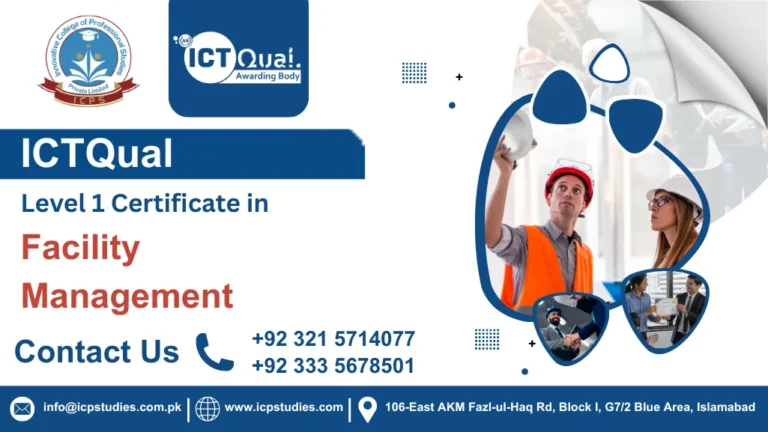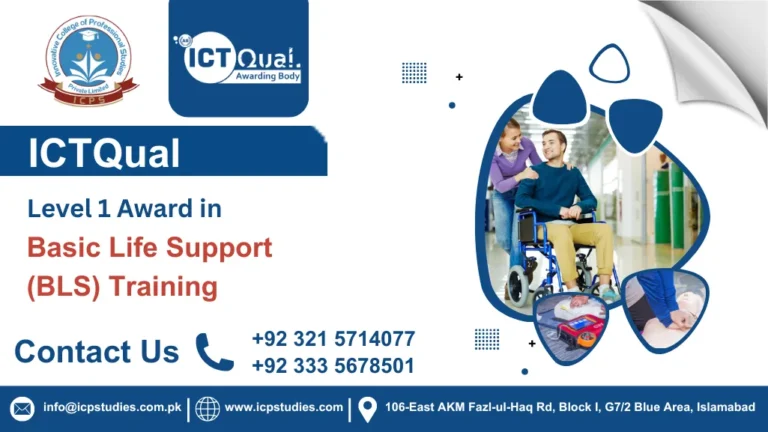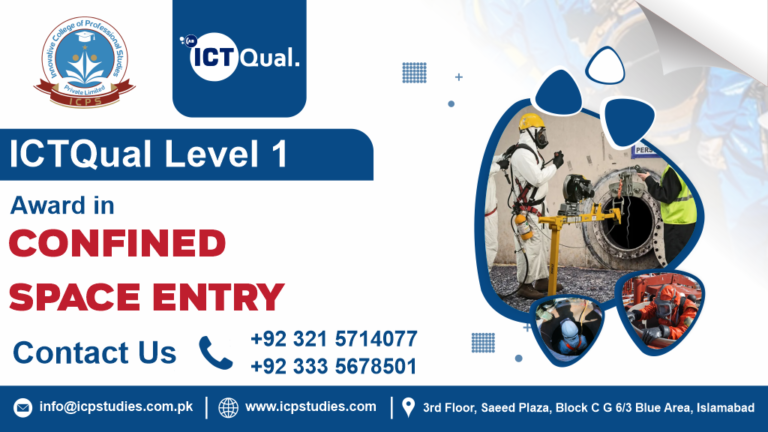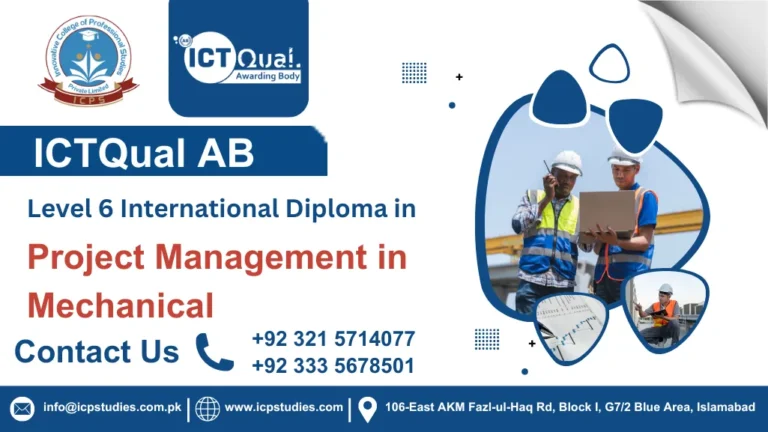In industries where precision and safety are paramount, such as construction, manufacturing, and logistics, effective lifting and rigging are crucial. The Level 3 Award in Lifting and Rigging is a specialized qualification designed to ensure that individuals possess the advanced knowledge and skills needed for these critical tasks. Whether you’re looking to start a career in this field or advance your current role, this award offers a comprehensive foundation for mastering lifting and rigging operations.
The Level 3 Award in Lifting and Rigging is an advanced qualification aimed at providing in-depth training for those involved in lifting and rigging operations. It covers a range of topics essential for safely and effectively managing lifting equipment, rigging operations, and associated safety procedures. This qualification is recognized across various industries, including construction, engineering, and manufacturing.
The Level 3 Award in Lifting and Rigging is more than just a qualification; it’s a commitment to excellence and safety in lifting operations. It provides a comprehensive understanding of advanced rigging techniques, equipment operations, and safety standards, preparing individuals to tackle complex lifting challenges with confidence. Whether you’re looking to advance in your current role or start a new career, this award offers the expertise and recognition needed to excel in the demanding field of lifting and rigging. Embrace the opportunity to enhance your skills and contribute to safer, more efficient operations in your industry.
All About ICTQual Level 3 Award In Lifting and Rigging
Course Overview
The Level 3 Award in Lifting and Rigging is an advanced vocational qualification designed to provide specialized training in the principles and practices of lifting and rigging operations. This award is intended for individuals who are involved in, or seeking to advance their skills in, the complex and critical tasks associated with lifting equipment, rigging systems, and load handling.
Level 3 Award in Lifting and Rigging is an essential qualification for individuals seeking to deepen their knowledge and skills in lifting and rigging operations. It provides a thorough understanding of advanced techniques, safety standards, and equipment management, preparing candidates to excel in this critical field.
Study Units
- Introduction to Lifting and Rigging
- Equipment and Tools
- Load Calculations and Weight Estimation
- Rigging Techniques
- Safety Protocols and Regulations
- Inspection and Maintenance of Equipment
- Communication and Teamwork
- Practical Applications and Assessments
To enroll in the ICTQual Level 3 Award in Lifting and Rigging, participants typically need to meet the following requirements:
- Age Requirement: Participants should be at least 18 years old.
- Basic Literacy and Numeracy: A good understanding of English, along with basic literacy and numeracy skills, is essential for completing the course.
- Relevant Experience: Prior experience in lifting and rigging operations or related fields is beneficial.
- Medical Fitness: Participants may need to provide evidence of medical fitness to engage in lifting and rigging activities.
- Course Registration: Participants must register for the course through an accredited training provider.
- Payment: Course fees must be paid as required by the training provider.
- Commitment to Attend: Participants should be prepared to attend the full duration of the course and complete any required assessments to receive certification.
The ICTQual Level 3 Award in Lifting and Rigging is designed for:
- Lifting Operations Personnel: Individuals directly involved in lifting and rigging tasks, such as riggers and signalers.
- Construction Workers: Those working in construction environments where lifting and rigging operations are common.
- Supervisors and Managers: Individuals overseeing lifting operations who need to ensure safety and compliance with regulations.
- Maintenance and Inspection Personnel: Workers responsible for inspecting lifting equipment and rigging setups.
- Safety Officers: Professionals responsible for implementing safety measures and protocols related to lifting and rigging activities.
- Anyone Seeking a Career in Heavy Industry: Individuals interested in pursuing careers in sectors that involve heavy lifting and rigging, such as construction, manufacturing, and shipping.
This course provides participants with the knowledge and skills necessary to safely plan, conduct, and manage lifting and rigging operations, ensuring compliance with safety standards and regulations.
Learning Outcome
. Introduction to Lifting and Rigging
Learning Outcomes:
- Understand Basic Concepts: Describe fundamental principles of lifting and rigging, including the purpose and importance of these operations in various industries.
- Identify Key Equipment: Recognize different types of lifting and rigging equipment, their uses, and their components.
- Outline Procedures: Explain standard procedures for planning and executing lifting and rigging tasks safely and effectively.
2. Equipment and Tools
Learning Outcomes:
- Select Appropriate Equipment: Identify and select the correct lifting and rigging equipment for specific tasks based on load requirements and operational conditions.
- Understand Tool Functions: Describe the functions and applications of various tools used in lifting and rigging, such as hoists, cranes, slings, and shackles.
- Demonstrate Usage: Operate lifting and rigging tools safely, including setting up, using, and dismantling equipment according to manufacturer guidelines and safety standards.
3. Load Calculations and Weight Estimation
Learning Outcomes:
- Perform Load Calculations: Accurately calculate the weight and center of gravity of loads to ensure safe lifting and rigging operations.
- Estimate Load Requirements: Estimate load capacities and determine appropriate rigging configurations based on load characteristics and environmental factors.
- Apply Mathematical Principles: Use mathematical principles to solve problems related to load distribution and stability.
4. Rigging Techniques
Learning Outcomes:
- Apply Rigging Methods: Demonstrate proficiency in various rigging techniques, including the setup of rigging systems for different types of loads and configurations.
- Secure Loads Effectively: Implement techniques for securing loads to prevent shifting or slippage during lifting and transportation.
- Adapt Techniques: Adapt rigging methods to accommodate different load types and operational challenges, ensuring optimal safety and efficiency.
5. Safety Protocols and Regulations
Learning Outcomes:
- Understand Safety Standards: Explain relevant health and safety regulations and standards applicable to lifting and rigging operations.
- Implement Safety Measures: Apply safety protocols to mitigate risks associated with lifting and rigging, including hazard identification, risk assessment, and emergency procedures.
- Ensure Compliance: Ensure compliance with regulatory requirements and industry best practices to maintain a safe working environment.
6. Inspection and Maintenance of Equipment
Learning Outcomes:
- Conduct Inspections: Perform routine inspections of lifting and rigging equipment to identify signs of wear, damage, or malfunction.
- Implement Maintenance Procedures: Follow proper maintenance procedures to ensure equipment remains in safe working condition, including lubrication, cleaning, and repair.
- Document Findings: Document inspection results and maintenance activities accurately, reporting any issues that require further attention or repair.
7. Communication and Teamwork
Learning Outcomes:
- Demonstrate Effective Communication: Exhibit clear and effective communication skills when coordinating lifting and rigging tasks with team members and other stakeholders.
- Collaborate in Teams: Work collaboratively with others to execute lifting and rigging operations, including following instructions, sharing information, and addressing issues promptly.
- Resolve Conflicts: Manage and resolve conflicts or misunderstandings that may arise during lifting and rigging tasks to ensure smooth and safe operations.
8. Practical Applications and Assessments
Learning Outcomes:
- Apply Knowledge Practically: Demonstrate the application of theoretical knowledge to practical lifting and rigging scenarios through hands-on exercises.
- Execute Safe Operations: Perform lifting and rigging tasks safely and effectively, applying techniques learned throughout the course.
- Evaluate Performance: Assess personal and team performance during practical assessments, identifying areas for improvement and demonstrating competency in real-world operations.
These learning outcomes ensure that candidates not only gain a comprehensive understanding of lifting and rigging but also develop the practical skills necessary for safe and efficient operations.
FAQs about ICTQual Level 3 Award In Lifting and Rigging







